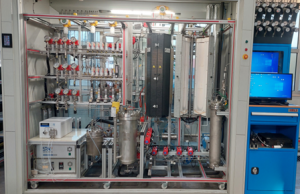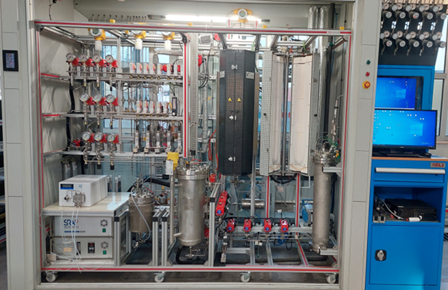PDH Case demonstration – Demo Plant in Turkey
- 11/03/2024
The PDH process will be tested at three locations:
- at Tupras, Turkey, at TRL6 (industrial environment) in non-integrated arrangement with membranes physically segregated from fixed catalytic bed,
- at TU/e, The Netherlands, at TRL5 (lab scale) in integrated arrangement with membranes inside fluidized bed,
- at UNISA, Italy, at TRL5 in both arrangements with fixed catalytic bed.
Moreover, the three plants will operate in different conditions in terms of pressure, temperature and space velocity, so having the chance to explore more widely the behaviour of catalyst and membranes in PDH process.
Revamping and procurement activities are in progress: in particular, membranes were sent from Tecnalia (Spain) and crossed Europe to reach the three demo plant sites. Our Partners are now involved in the very delicate task of installing the membranes in their plants and carrying out all the necessary tests for starting up their plants. We expect that the three plants will be ready for the demonstration in Q2 of 2024.
In the meantime, KT and NextChem (a new Partner enlarging the MACBETH family, who joined the project in March 2023) are in charge of design scale-up activities at industrial scale, which will be finalized by end of MACBETH Project, October 2024.
Demonstrator: TUPRAS
As a demonstrator, TUPRAS started design and procurement activities in August 2023 for the revamping of its current plant to bring it to TRL-6 for demo operation. All the items are currently integrated to the system and TUPRAS demo plant is ready for operation. In the demo operation, there will be two reactors and one membrane separator which contains 7 membranes inside. Outlet stream of first reactor will be fed to membrane separator for H₂ removal. For effective H₂ removal, there should be driving force between PDH atmosphere and permeate side. Pressurizing the system could be an option for supplying driving force for H₂ removal. However, increasing pressure in PDH causes significant conversion decrease. That’s why TUPRAS will perform the PDH demo operation at atmospheric pressure and apply vacuum to the inner side of the membranes to provide driving force for H₂ removal. This will enable TUPRAS to carry out the demo operation with higher propane conversion and higher propylene yield per propane pass by using two scaled up catalyst, former is Pt(0.63% wt.) Sn(0.91% wt.), Sn/Pt: 1.45 on commercial Sasol MG70, the latter is Pt(0.35-0.5% wt.) with Sn/Pt ratio 1.40-1.50 on 93MG70 which is developed and shaped by TUPRAS.


